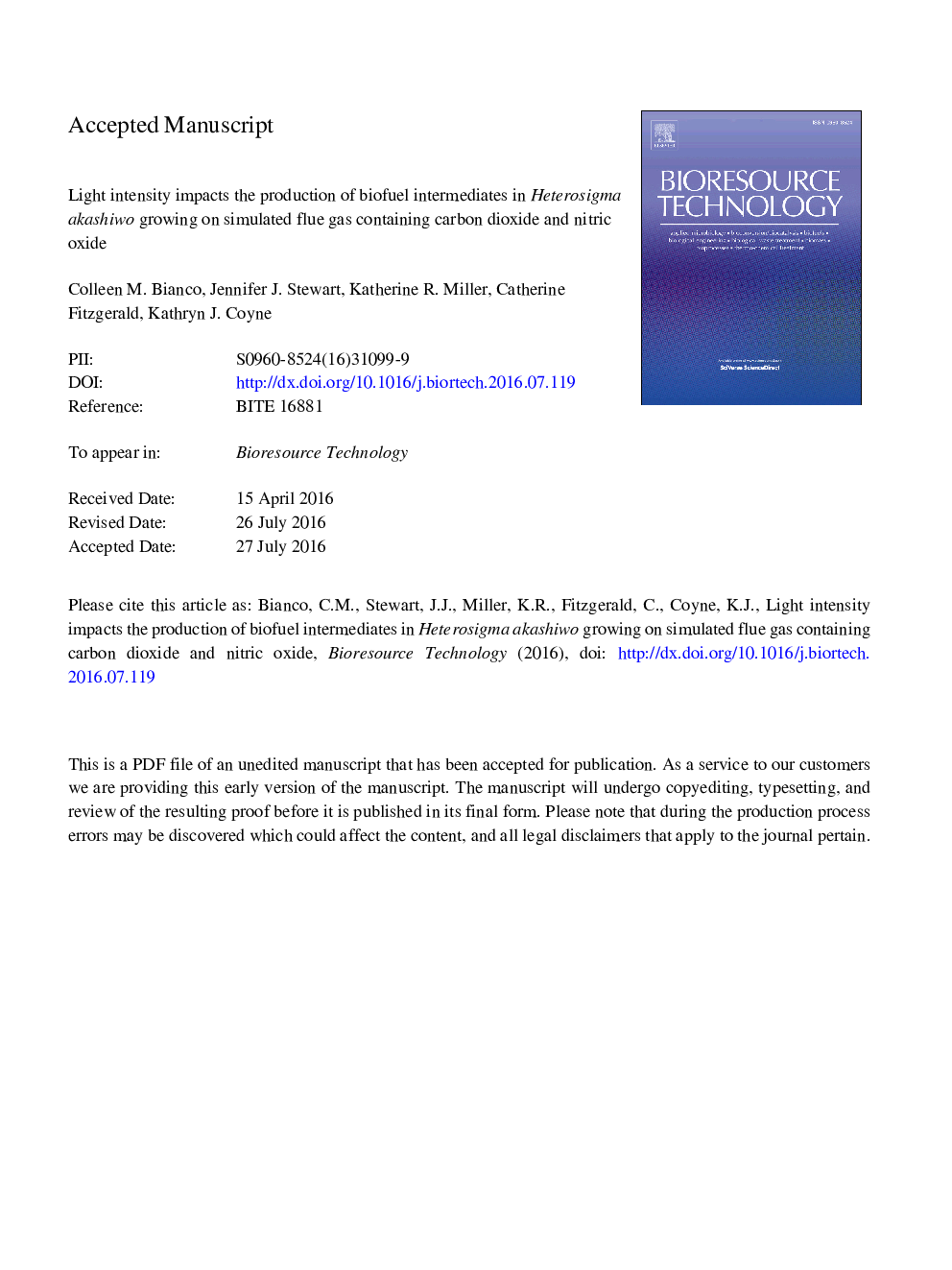| Article ID | Journal | Published Year | Pages | File Type |
|---|---|---|---|---|
| 7069933 | Bioresource Technology | 2016 | 25 Pages |
Abstract
As a potential biofuel feedstock, the marine microalga, Heterosigma akashiwo, accumulates significant lipids, is capable of long-term growth in outdoor photobioreactors, and is an excellent candidate for the bioremediation of industrial emissions. Here, we evaluated resource partitioning in H. akashiwo growing on a CO2 and NO gas mixture under three light intensities: 160, 560, or 1200 μmol quanta mâ2 sâ1. Light levels had no effect on growth; however, cultures in high light accumulated 2.3-fold more carbohydrates and 17% fewer lipids. Light levels did not affect the percentage of saturated fatty acids, but mono-unsaturates increased by 6% and poly-unsaturates decreased by 12% in high light. The fatty acid profiles reported here suggest that H. akashiwo is a good candidate for the production of neutral lipids for biodiesel and also omega-3 fatty acids, and that the quality of biodiesel acquired from feedstocks grown under fluctuating light conditions would be relatively stable.
Related Topics
Physical Sciences and Engineering
Chemical Engineering
Process Chemistry and Technology
Authors
Colleen M. Bianco, Jennifer J. Stewart, Katherine R. Miller, Catherine Fitzgerald, Kathryn J. Coyne,
